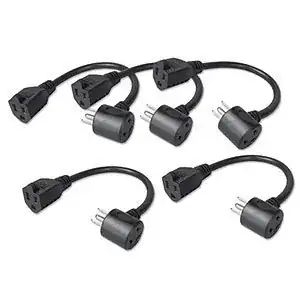Personally speaking I try very hard to only buy 12V or 5V devices, and then I create adapters to run them off a PC power supply. Then you can either connect them to your PC so they switch off when you switch your PC off, or you can buy a cheap PC power supply and leave it running 24/7 without connecting it to a computer.
You would need a certain minimum number of devices to make this worthwhile - if you think a bunch of power adapters look bad, a bare PC power supply isn't much nicer. In my case all my equipment is in a standard 19-inch rack, so at least I can hide the supply somewhat.
This isn't a quick solution though. You have to be willing to solder up custom power cables for each new device you use (since they all seem to use a slightly different power connector) and you need to build junction boxes or similar to split a single power rail into multiple power cables, one for each device.
You'll also have to come up with some solutions for devices that require non-PC voltages, like 7.5V. Don't be fooled into thinking you can do the trick often done to run fans from 7V though, where you use +5V as GND and +12V as VCC. When you start connecting devices together with shielded cables the shields will connect all the GND lines together, and suddenly you're shorting +5V to the real GND via one of these cables. This will either short out the power supply (which will promptly switch off, no harm done) or more likely it will deliver a substantial current across the cable making it get very hot, and possibly melting the insulation. To do this correctly you can often get away with a voltage regulator, since most devices like this only require small currents.
If you're only looking at a simple way to power your Pi and all its peripherals, maybe an old PC case would be the way to go. They're easily come by (often for free), there's plenty of space to mount the Pi, USB hub, and even internal hard drives, and if you've got an older LCD monitor that runs off 12V then you can even power that from the case as well.
